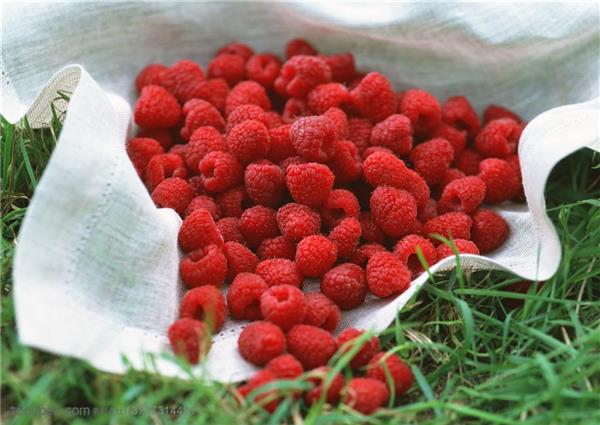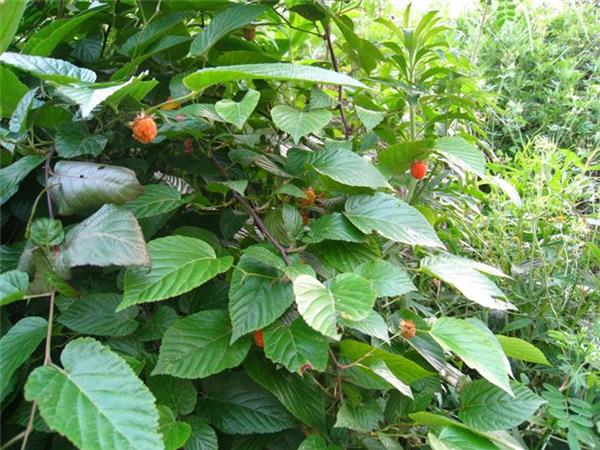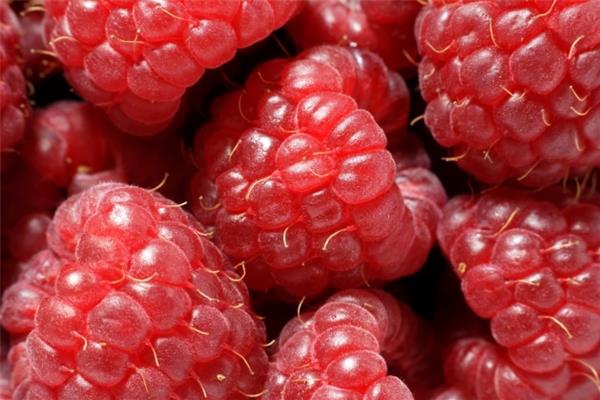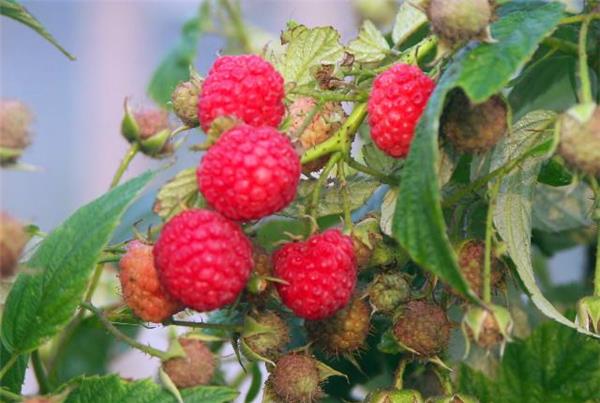The difference between Red Raspberry and Strawberry cultivation techniques of Red Raspberry
Red raspberry is a very delicious fruit with rich nutrients, and red raspberry trees are easy to grow, so it is definitely a tree species worth planting.

What's the difference between red raspberries and strawberries
1. The common characteristics are gorgeous fruit, soft and juicy, unique flavor. From the appearance of the fruit, it is called aggregate fruit in botany and berry in cultivation.
two。 Strawberry is a perennial herb with short plants. And raspberry is a perennial trailing shrub, up to $2 million.
3. Raspberry has high economic benefit and remarkable ecological benefit. It is suitable for scattered planting in farm courtyard, hillside and barren slope, and also suitable for intensive management. There are upright type, semi-vertical type, creeping type. It can be divided into two categories: thorn and non-thorn. After the one-year-old seedlings are planted, some varieties will blossom and bear fruit in the same year and the next year, and they can enter the full fruit period in 3 to 5 years, and their economic life can reach 20 years. Raspberry has beautiful flowers and fruits, which can beautify the environment, conserve soil and water, and has good economic, ecological and social benefits.

Second, common red raspberry varieties
Harritaz (Heritage): erect double-season berries, ripe in autumn, medium fruit, fruit weighing about $2, bright red, strong aroma, strong root tillers, high yield (USA).
Tulameen: erect single-season berry with fruit about $2, thick and colorful, with few roots, strong growth, high yield and cold resistance (USA).
Oris (Orus): semi-creeping double-season berries with good fruit taste, fresh food and high yield (USA).
Summit: double-season red berries, hard, delicious, high-yielding, easy to pick, fresh-keeping, storage and transportation, ripening in late August (USA).
Willamette: high yield and early maturity, sweet and sour fruit, nearly round, dark red, medium firmness. The tree is strong and the root tillers are extremely strong (United States).

3. Key points of cultivation of red raspberry
1. Garden selection: red raspberry does not have strict requirements on soil, and the general land can grow normally, but it grows better in more fertile soil; it should be cultivated in spring and autumn, and the survival rate is the highest.
2. Cultivation method: after the land is flattened and fine, the conditions permit, apply sufficient base fertilizer; according to row spacing 2 meters, plant spacing 30 cm; then dig holes according to length, width and depth of 15 cm, straight line equidistant; soak the seedling roots in water for 4 hours before planting, and then plant 1110 seedlings per mu; the cultivation method is very simple: put the seedling roots into the pit, bury the soil and step on the soil; the main points are: deep planting and shallow burial. The standard is: the root of the seedling and the surrounding soil should not exceed the original watermark of the seedling in the nursery; where there are conditions, no rain should be watered or covered with plastic film after planting to ensure the survival rate.
3. Management after planting: within two months after red raspberry planting, the survival situation should be checked in time and the management should be strengthened. The branches of red raspberry seedlings after planting are mainly underground rhizomes, and the aboveground parts are not as important as other fruit trees, so when raspberry seedlings are planted, the aboveground parts are only cut about 20 cm, which can improve the survival rate; after planting and before sprouting, "ground sealing medicine" can be used to prevent the emergence of grass in large areas. During the growth of red raspberries, the soil was loosened after watering in especially arid areas, and then weeded with "gram without trace" or "paraquat", which was labor-saving and labor-saving.
4. Pruning methods: red raspberries are generally not pruned, but in order to be beautiful and high-yielding, the first pruning is carried out before the raspberries are unearthed in early spring. For the thin and weak branches that are too dense, the branches with diseases and insect pests should be cut off in time, and the fruiting branches should be trimmed into a unified grid of 1.3 meters to 1.5 meters. After the second pruning, all the mother branches that bear fruit should be cut off in order to improve ventilation and light transmission. In the southern region where there is no buried soil to prevent cold and survive the winter, it can be postponed to the next spring before the mother branch germinates, which should be carried out sooner rather than later.
5. Harvest and storage: there is a slight gap in the maturity period of red raspberry due to different regions and varieties. The northeast region generally begins to mature in early July, and it is harvested every 1-2 days during the maturity period, and the harvest period is about one month. Fully ripe berries have a unique fruit flavor, attractive aroma, bright red color, soft peel, sweet and sour taste, people can never get tired of eating, generally when the berries reach well-done, the picked berries can be sold directly in plastic boxes.

Red raspberry fruit can not only be used to eat, but also bright color, small fruit shape, with a very good fruit effect, so if the family has a courtyard and other suitable conditions of friends, you can also try to cultivate red raspberries.
Related
- Wuhan Hospital Iron Tree Blooming Result Was Instantly Frightened by the Gardener Master
- Which variety of camellia is the most fragrant and best? Which one do you like best?
- What is the small blue coat, the breeding methods and matters needing attention of the succulent plant
- Dormancy time and maintenance management of succulent plants during dormancy
- Minas succulent how to raise, Minas succulent plant pictures
- What are the varieties of winter succulent plants
- How to raise succulent plants in twelve rolls? let's take a look at some experience of breeding twelve rolls.
- Attention should be paid to water control for succulent plants during dormant period (winter and summer)
- Watering experience of twelve rolls of succulent plants
- Techniques for fertilizing succulent plants. An article will let you know how to fertilize succulent plants.



